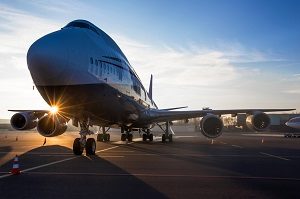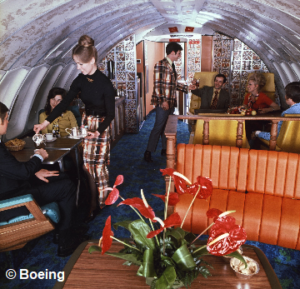
The end of an era
Last week Boeing announced that production of the iconic 747 would cease in 2022. The ‘jumbo-jet’ has been a staple of long-haul air travel for half a century, significantly outlasting Boeing’s expectations for passenger use when designing the aircraft in the 1960’s.
While the announcement doesn’t come as a huge surprise – the worldwide fleet of passenger 747s has been shrinking for years, major airlines have recently announced the retirement of their 747 fleets, and modern twin-engine widebody aircraft are far more efficient – it is a significant announcement that even non-aviation enthusiasts will have noted with interest.
50 years of “The Queen of the Skies”
The 747, known by many as the Queen of the Skies, entered commercial service in 1970. It was a game changer in long-haul travel at a time when passenger numbers were booming, and the cost of flying was reducing. It quite simply made the world a smaller place.
The unique design of the aircraft also allowed it to be easily converted into a cargo carrier. Back in the 1960’s, Boeing expected supersonic aircraft to dominate the passenger market in the long-term, rendering subsonic planes like the 747 obsolete. They did however expect it to excel in the cargo market for many years.
Fortunately for the 747, supersonic air travel did not make the expected impact, and the 747 has subsequently enjoyed a long career carrying billions of people to destinations all over the globe.
The contribution of UK industry
The UK has played a small but important part in the manufacture and service of the Boeing 747. Major components are predominantly made in the US, however companies in the UK are responsible for contributing to actuation and power systems. It’s also worth noting that the huge aircraft is powered by Rolls Royce’s RB211 engines.
The wider impact of the 747
While it was a classic airliner for the long-haul traveller, the Boeing 747 also made its name for several other reasons. Firstly, because of its sheer size, the 747 is responsible for the biggest building in the world (by volume). The Boeing Everett Factory in Everett, Washington, is where the Boeing 747, 767, 777 and 787 wide body aircraft are assembled. It was built in the 1960’s specifically for production of the 747.
The 747 was also modified to be used by the President of the United States of America. It has carried the prestigious Air Force One callsign since 1990 and the US Air Force have ordered two 747-8s to serve as the next presidential fleet.
Perhaps the most unusual passenger of the Boeing 747 is the Space Shuttle. Two extensively modified 747s were used by NASA to transport Space Shuttles from landing sites back to the Kennedy Space Centre. The 747 carried out this role throughout the life of the Space Shuttle programme from 1977 – 2011.
Saying goodbye
While we will see a few 747s in our skies for years to come, the announcement of its production ending in 2022 does feel like the end of an era. The 747 was the world’s largest passenger plane for 37 years, but its legacy will live on for much longer.






